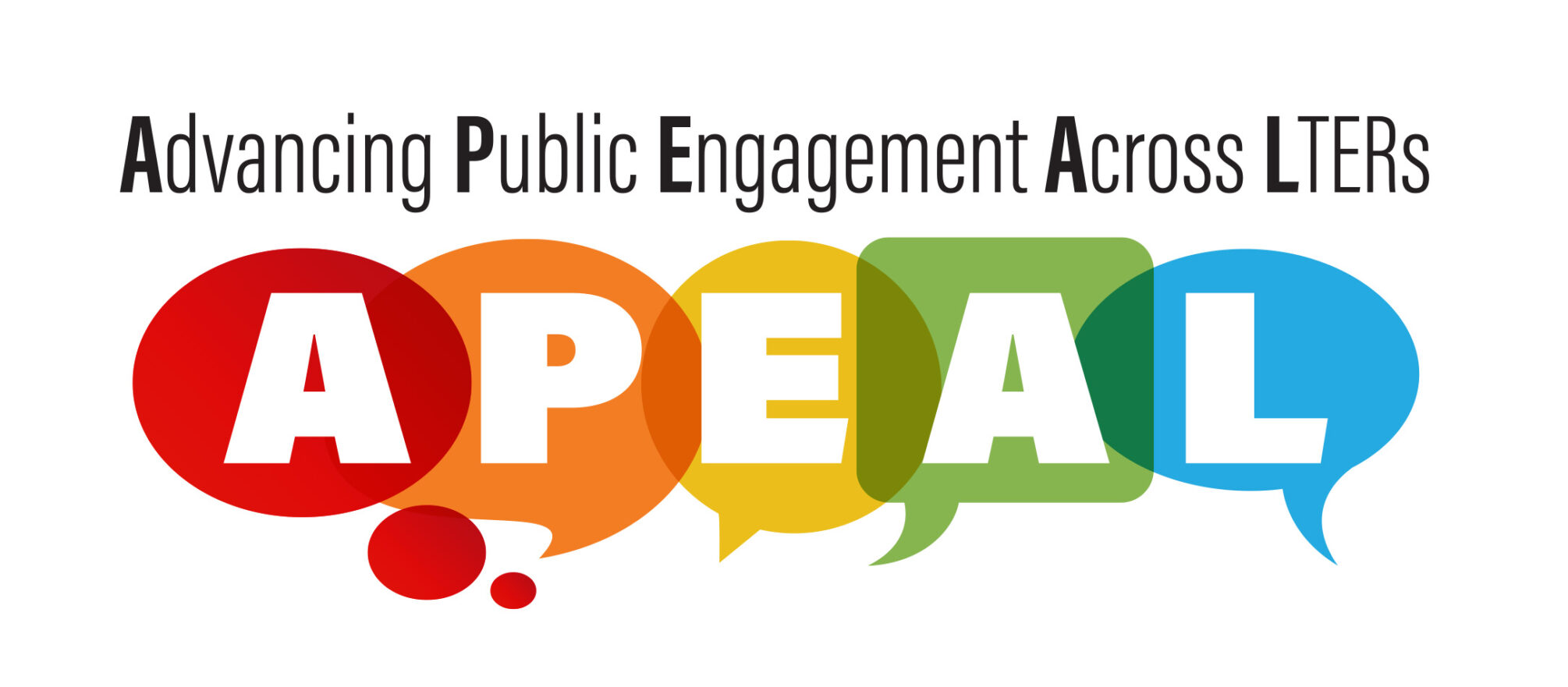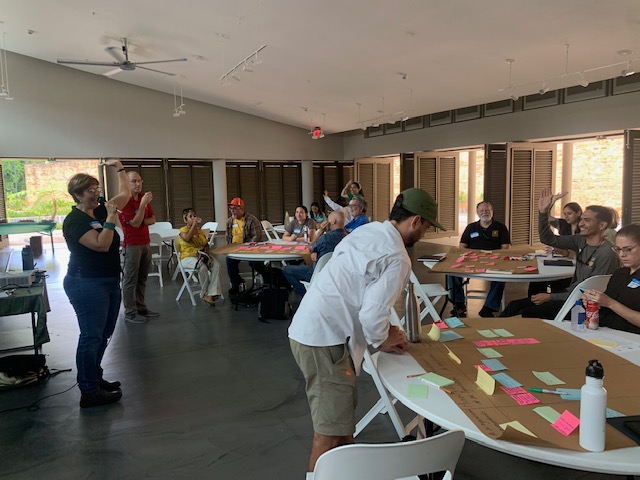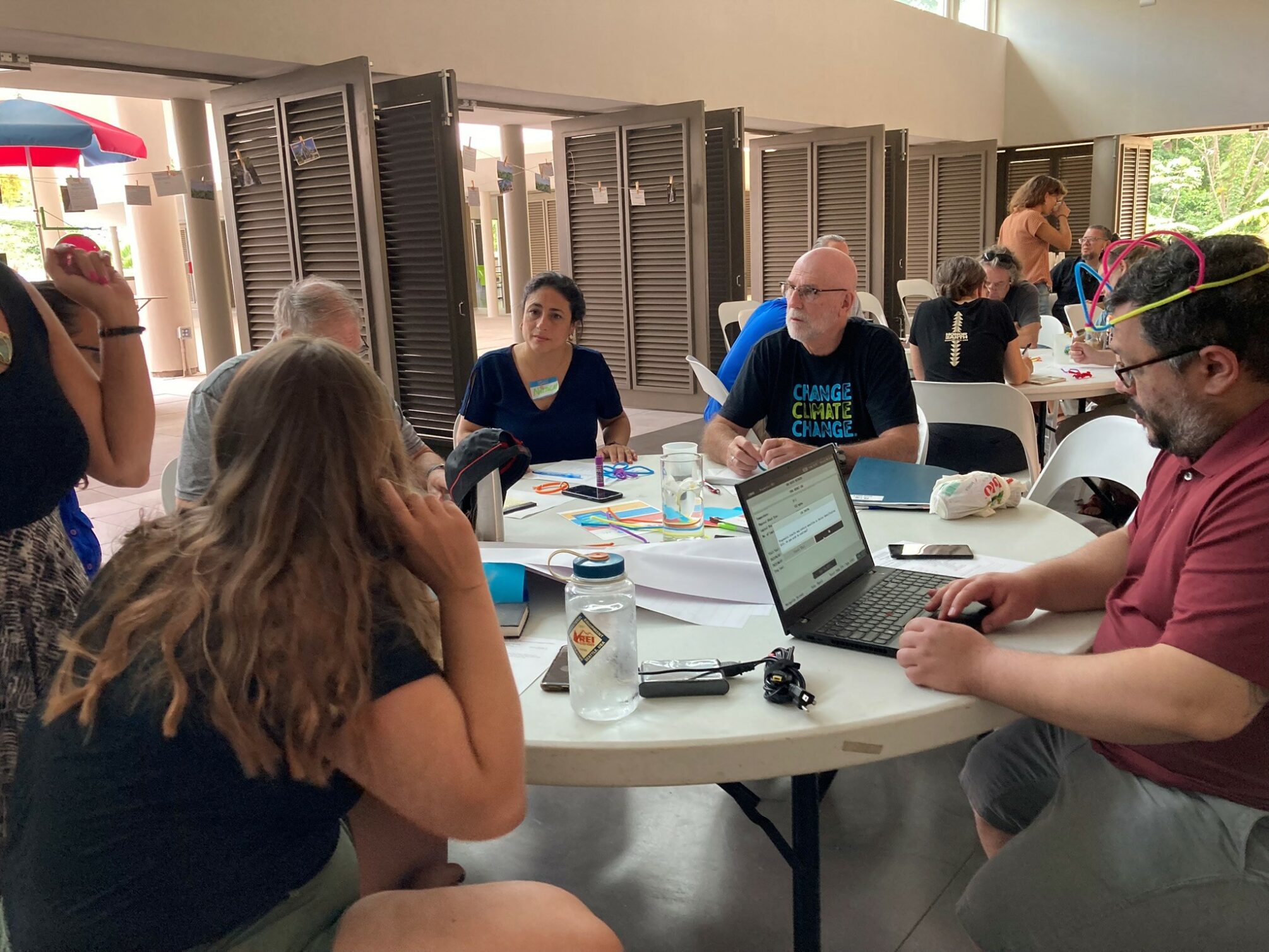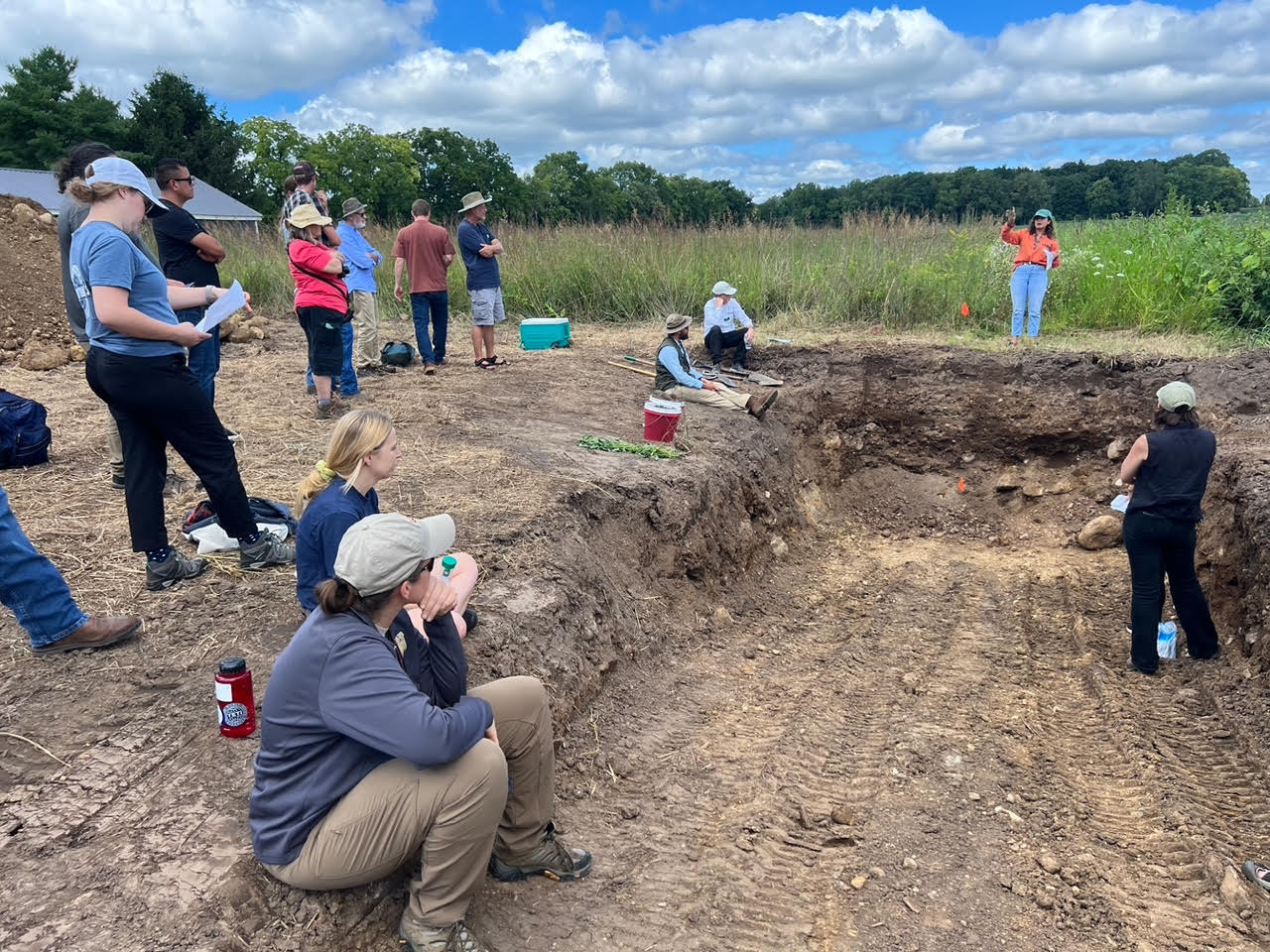
The APEAL project uses the LTER Network to study how research networks can improve public engagement strategies, offer insights from scientists and communities, and foster actionable plans to inspire change.
By Cristina Mancilla, Community Engagement Officer at the LTER Network Office
Often, the narrative around public engagement is one of vague commitments and good intentions, and although well-meaning, it also results in missed opportunities for positive impact. The LTER Network Advancing Public Engagement Across LTERs (APEAL) project asks scientists not only to consider, “What are we doing to engage the public?” but also “Why are we doing this? How will we know if we’re making a difference? and “How can we address the needs and interests of the community?”.
The APEAL project is an evidence-based, in-depth case study that focuses on enhancing Public Engagement with Science (PES) strategies within STEM research organizations, using the LTER Network as a model. “LTER sites have a long history of building on one another’s accomplishments in information management, experimental design, and education,” says Marty Downs, director of the LTER Network Office. “The APEAL project seeks to harness the same creativity and community to improve engagement with science at the scale of groups and organizations.”
The APEAL model is similar to how LTER sites share ecological data or methods. Approaches are developed and refined at individual sites, and successful initiatives are then expanded across the network to make a broad impact.
Understanding what motivates public engagement and how public engagement strategy is formed at LTER sites stands to inform the work of other research networks and organizations. LTER sites are embedded in communities over years and decades, similar to many other mid-sized research networks. The long timeframe requires that initiatives align the efforts of a rotating cast of researchers—and the lessons from the APEAL project will help inform similar initiatives across science and beyond.
Understanding Scientists’ Views about Public Engagement
The first step of the project, launched in February 2023, was trying to understand where the LTER Network currently sits in regard to public engagement at sites. The APEAL research team conducted a network-wide survey of scientists’ overall PES views and experiences, including questions on what they think and believe about engagement, what they hope to accomplish by their efforts, and what would make them more willing to do public engagement. Of the list of 2,509 survey recipients, 433 scientists responded. Results from the survey show that scientists are willing to engage with a range of groups, but they are more likely to adopt a strategy and participate in community listening when there are perceived benefits for their LTER site and themselves.
Case Studies at LTER Sites Advance PES Practice and Research
Effective engagement is grounded in two-way exchange, so the APEAL project also includes three case studies to understand how communities view and engage with their local LTER site. To do this, APEAL researchers, along with a community liaison from each of the sites, conduct conversations with the community. The liaison also leads a participatory examination of community assets and interests.

Credit: Nancy Merlo, CC BY-SA 4.0.
With an understanding of scientist and community perspectives, each case study site then begins strategic engagement planning which includes developing an actionable PES plan with clear goals, tactics, and objectives, that supports a data collection framework that allows for internal evaluation.
This year, the team conducted their first case study with the Luquillo LTER program in Puerto Rico. After this year of interviews with site leadership, conversations with community liaisons from Amigos De El Yunque, and reflection, plus intense focus on their strategic PES plan, Luquillo has a clear direction for PES over the next 6 to 7 years. Chris Nytch, the Assistant Director of the Luquillo LTER program reflects on the process, “I knew that our LTER site had a lot to offer, but the interactions we’ve had with a diversity of partner groups have illuminated the tremendous potential for cultivating reciprocal collaborations from which LUQ can learn and benefit as well.”
As Luquillo prepares their renewal proposal to NSF, they are developing strategies around how to integrate what they’ve learned about public engagement into their long-term science.

Credit: Kari O'Connell
One of Luquillo’s long-term goals is to strengthen the role of science in natural resource management decisions. For example, they’d like to increase the likelihood that managers at a local water company use LTER results and expertise when making decisions about water extraction during droughts. To establish trust and strengthen their relationship, Luquillo could establish open communication to ensure that their research is beneficial to natural resource managers. Tactics to achieve this could include arranging/attending meetings to receive and share insight from managers or sharing summaries of key research findings. The effectiveness of these tactics might be evaluated bytracking the number of times managers reach out to Luquillo for advice, documenting number and quality of research partnerships, or surveying how managers rate the trustworthiness of Luquillo scientists. These interactions would not only demonstrate that Luquillo research is valuable, but reinforce that researchers who work at the site are committed to the same goals and values as the community.
In the coming year, the APEAL team will work closely with Virginia Coast Reserve LTER and Hubbard Brook LTER on case studies and strategic plans for community engagement.
The sites were chosen because they represent sites with varying experience with PES and because they provide a range of community contexts and site capacity. The case study sites will provide examples for other LTER sites and other organizations for how to build deeper understanding of community views, strengthen relationships, and develop PES strategies in the future.
PES Working Group – Leveraging the Power of a Network
In addition to the case studies, the APEAL project includes a PES Working Group of scientists and outreach professionals from 9 different LTER sites. The working group members are brought together to participate in PES pilot studies and co-interpret research. Many LTER sites already have deep connections with their communities and others are eager to learn how to strengthen relationships and co-create research.
Working Group members hold a range of experiences in PES. For example, the Beaufort Lagoon Ecosystem LTER program, located in northern Alaska, is adjusting their research questions to reflect the concerns of the Kaktovik and Utqiaġvik communities regarding culturally significant fish. Or, the Kellogg Biological Station LTER site in Michigan working with farmers to assess the impact of management practices, such as prairie strips, on farm biodiversity and profit.

Credit: Kellogg Biological Station LTER, CC BY-SA 4.0.
Working Group members are given a small grant to either support an existing PES initiative or seed a new one at their site. Over the next two years, Working Group members will convene to help each other develop strategy, share what they’ve learned through their projects, and explore how to disseminate their knowledge to the greater STEM community.
Through research and practice, the APEAL project pulls from and contributes to evidence-based approaches for effective PES that focus on impact and long-term goals. Beyond its research objectives, APEAL serves as a catalyst for advancing the narrative of PES within STEM institutions and networks. Over the past year, the APEAL team has uncovered many new insights into what PES means for the network, but what is repeatedly clear is that it requires being thoughtful about the processes and products of scientific research.










